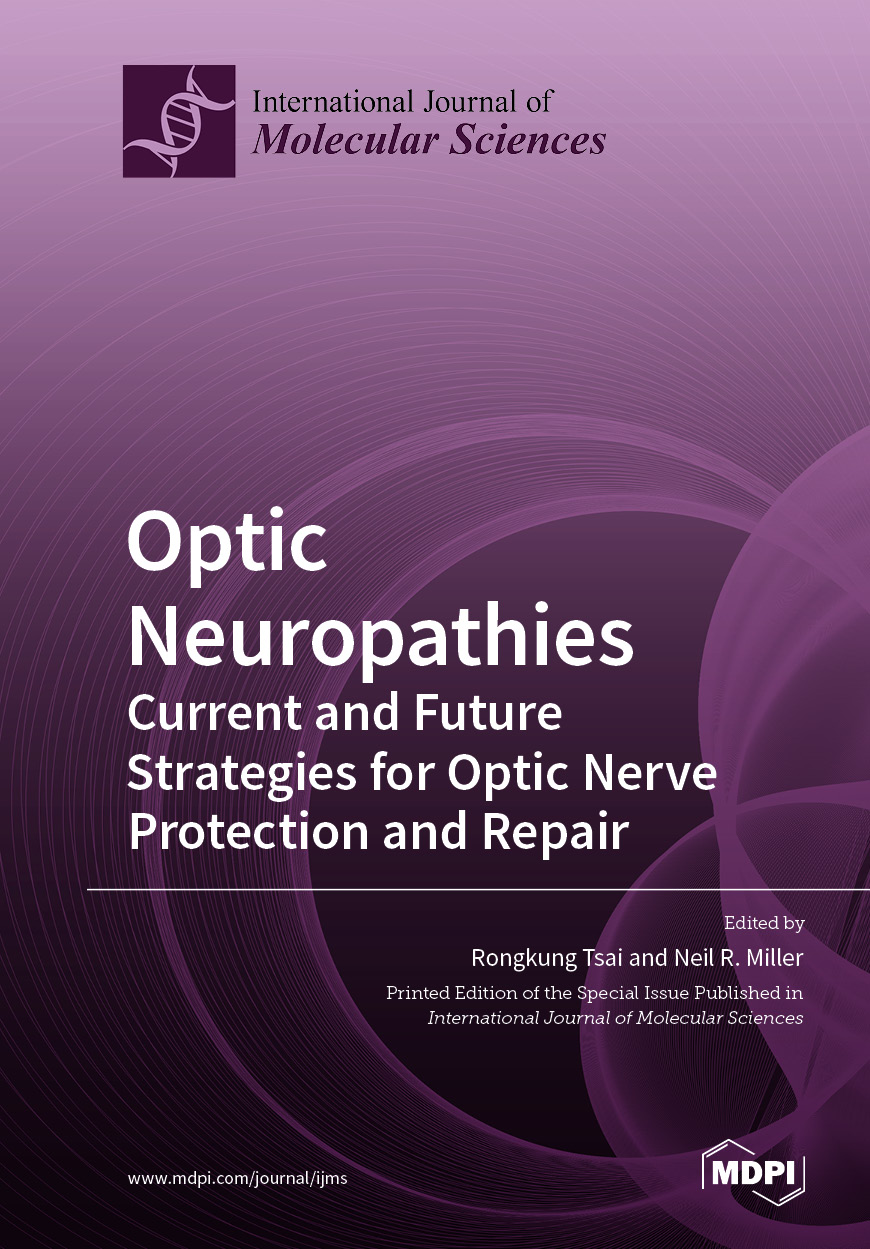Optic Neuropathies: Current and Future Strategies for Optic Nerve Protection and Repair
A special issue of International Journal of Molecular Sciences (ISSN 1422-0067). This special issue belongs to the section "Biochemistry".
Deadline for manuscript submissions: closed (30 October 2022) | Viewed by 47950
Special Issue Editors
Interests: Clinical Neuro-ophthalmology; ocular neuroprotection; translational medicine and regenerative medicine
Special Issue Information
Dear Colleagues,
Optic neuropathies are conditions in which there is damage to the optic nerve (ON) caused by a variety of causes, including glaucoma, inflammation, gene abnormalities, ischemia, trauma, and toxicity. ON damage triggers a process of axon degeneration, inflammatory cytokine upregulation, breakdown of the blood–optic nerve barrier, and, eventually, induction of apoptosis of retinal ganglion cells (RGCs), resulting in optic atrophy. To date, there is no effective treatment for most optic neuropathies; however, because the damage initially is axogenic, there may exist a window of therapeutic opportunity before the death of RGCs. Thus, the search for effective treatments for various optic neuropathies before there is permanent damage to prevent or limit visual dysfunction and the development of methods to stimulate axon and/or RGC regeneration to restore vision after damage has occurred are crucial.
This Special Issue is now open to receive manuscripts on all aspects of current and future strategies for optic nerve protection and repair. In this Special Issue, we welcome the submission of full review, original research as well as perspectives that cover, but are not limited to, the following topics:
- Molecular mechanisms to protect RGCs and/or axonal damage;
- Translational research of RGCs death and repair;
- Stem-cells based therapy to repair optic nerve damage;
- Gene therapy in optic neuropathies;
- Regenerative medicine in optic neuropathies;
- Neuroprotection for glaucomatous optic neuropathy.
Prof. Dr. Rongkung Tsai
Prof. Dr. Neil R. Miller
Guest Editors
Manuscript Submission Information
Manuscripts should be submitted online at www.mdpi.com by registering and logging in to this website. Once you are registered, click here to go to the submission form. Manuscripts can be submitted until the deadline. All submissions that pass pre-check are peer-reviewed. Accepted papers will be published continuously in the journal (as soon as accepted) and will be listed together on the special issue website. Research articles, review articles as well as short communications are invited. For planned papers, a title and short abstract (about 100 words) can be sent to the Editorial Office for announcement on this website.
Submitted manuscripts should not have been published previously, nor be under consideration for publication elsewhere (except conference proceedings papers). All manuscripts are thoroughly refereed through a single-blind peer-review process. A guide for authors and other relevant information for submission of manuscripts is available on the Instructions for Authors page. International Journal of Molecular Sciences is an international peer-reviewed open access semimonthly journal published by MDPI.
Please visit the Instructions for Authors page before submitting a manuscript. There is an Article Processing Charge (APC) for publication in this open access journal. For details about the APC please see here. Submitted papers should be well formatted and use good English. Authors may use MDPI's English editing service prior to publication or during author revisions.
Keywords
- optic neuropathy
- glaucomatous optic neuropathy
- regenerative medicine
- optic nerve protection
- optic nerve repair
- gene therapy
- stem-cell based therapy








